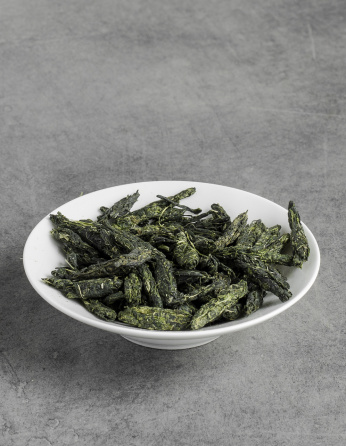Dangocha Gyokuro
Umami bomb discovered
We have found one of the most exciting Japanese shaded tea, etherial, freshly green with great health benefits.
Tasting night at Zhao Zhou. We always aim to find the best teas for our tea range. There are seasons when the direction is clear; fresh greens in early Spring, Phoenix mountain in the Summer, after that Wuyi shan in Autumn. We get a lot of samples from our producer friends, sometimes we can’t even taste all of them.
This is what happened to the Dangocha Gyokuro too. The tea was laying on the back shelf for 3 years when finally Gábor found it, so we could savor it at one of the tasting events. We thought this will be a good one to start the evening with, ultimately this was one of the most interesting tea that evening. We selected it into our regular assortment. We have tasted the 2018 vintage after 3 years, was in perfect shape, the 2020 vintage arrived a few weeks ago and is available now. As Mr. Yoshida told us, this tea is really good for aging, just keep it in a dry, cool place.
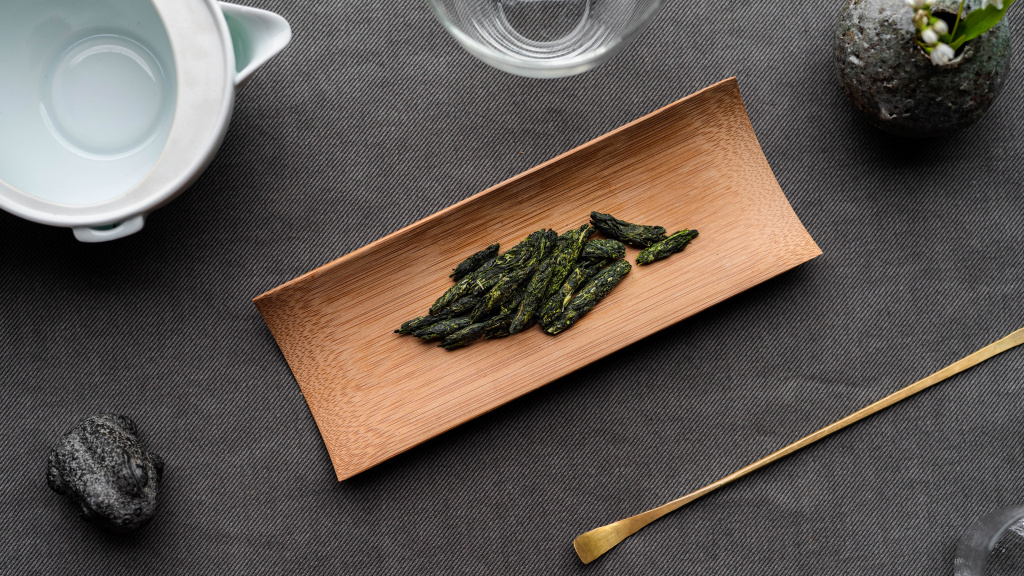
One of Japan’s oldest tea gardens is located near Kyoto, in Uji. The Yoshida family takes care of it for nearly 500 years, as requested by the Emperor. They always give much attention to the making process and have a long history of traditional tea making. The great-grandfather of Mr. Yoshida made the first Dangocha in the early 1900s, named after the popular Japanese Dango sweets.
Let’s see how it’s produced. They shade the whole plantation for 3 weeks before the harvest of Gyokuro. This method helps to get tender and softer leaves with more amino acid and chlorophyll in them. After picking and withering comes the kneading and rubbing process. Through the special hand movements, the leaves separate, this is how the Gyokuro is formed. During this method, the smaller, finer leaves stick together and form the cylinder-shaped Dango tea. They sort out these amazing pieces from the Gyokuro one by one. This type of tea is only made in very small quantities. According to Mr. Yoshida, it would be difficult to make this tea in large quantities, because it’s made accidentally. Two cultivars are used for Dangocha: Samidori and Ujihikari.
This tea which is made of really tender leaves contains plenty of active ingredients, such as Vitamin-C, Vitamin-E, catechin, caffeine, and other antioxidants.
Mr. Yoshida recommends also trying and consuming the dry leaves as a snack. Another way of enjoying it is after some brew, simply taste the steeped leaves with rice and soy sauce with a touch of salt.
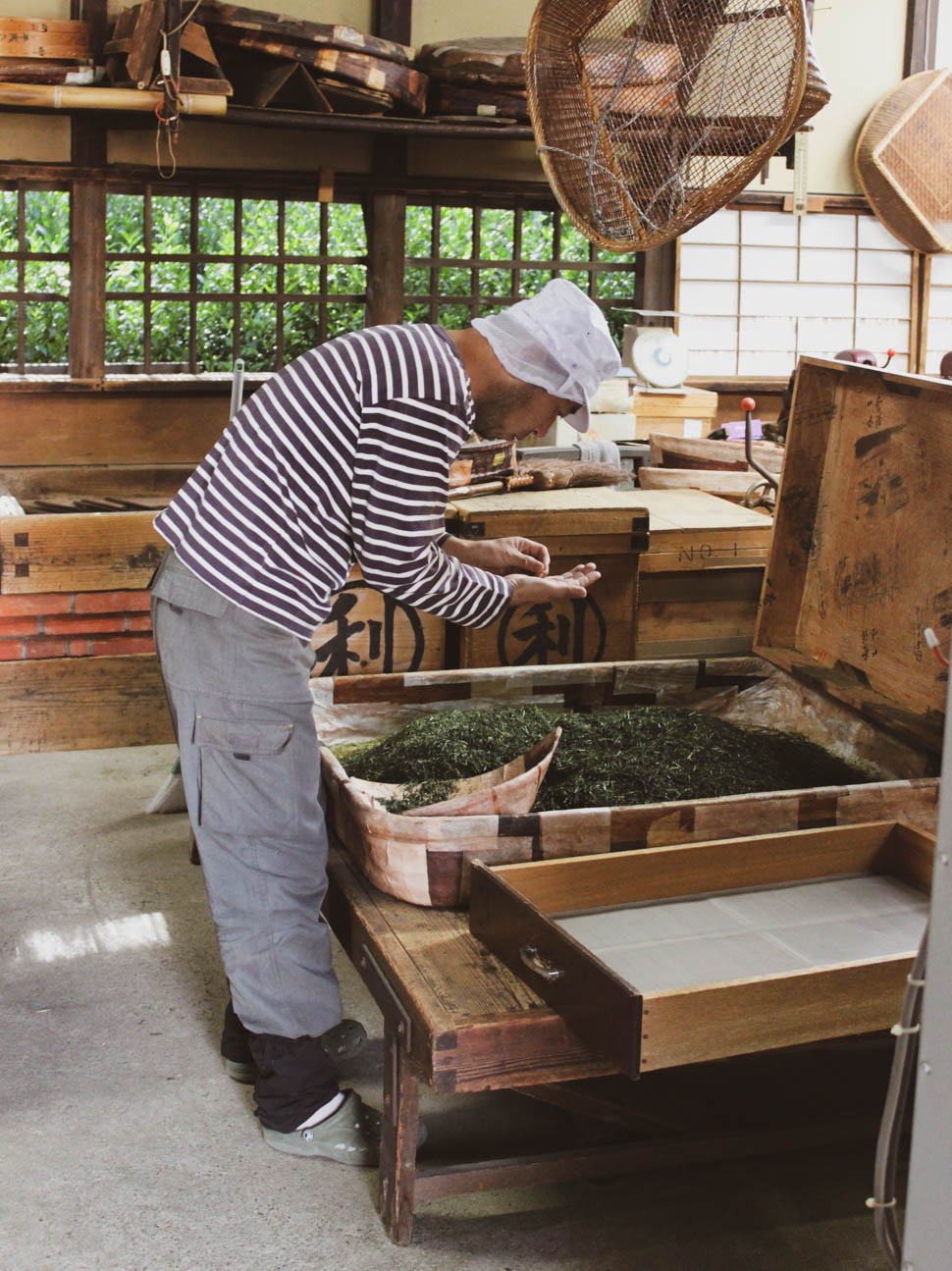
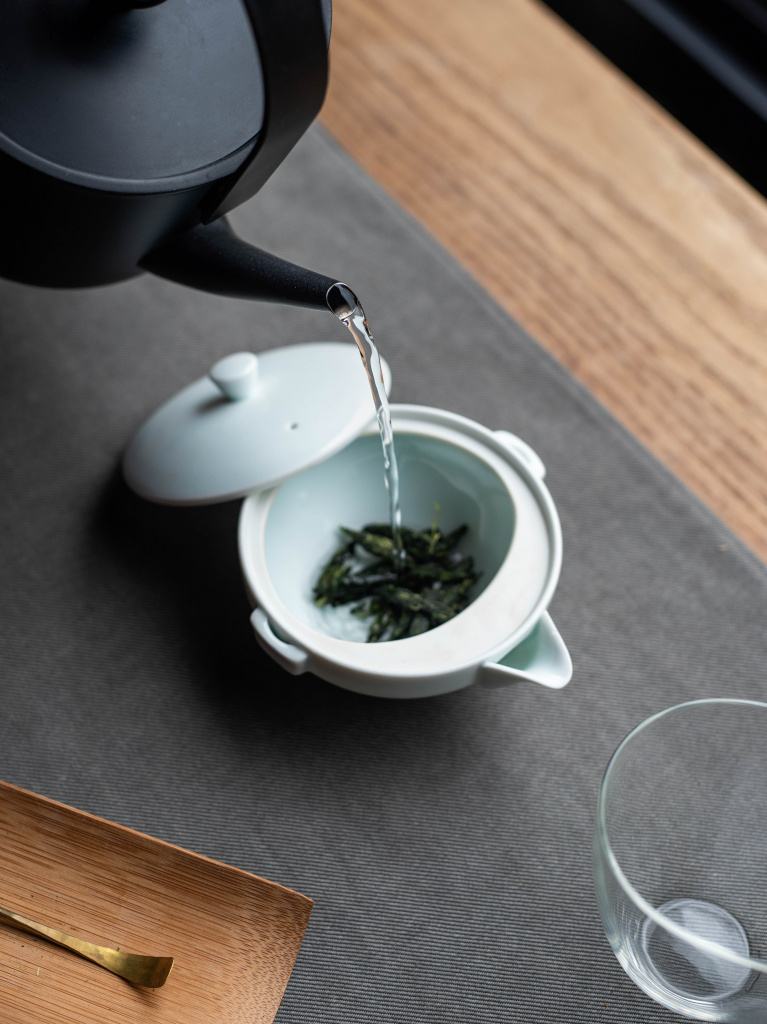
Tasting notes
2018
First, as we were not familiar with this tea, we started with a higher temperature, like 75 degrees celsius. Happy spring feeling with a bit of citrus on the palate. There’s the fifth basic taste, umami between the flavor notes. Hints of spinach and a bit of tarragon in the first pours which turn to pine resin later. This tea gives us a calm feeling, like cotton pajamas, which hugs and touches you almost imperceptibly.
2022
The steamed gaiwan has smooth, ethereal, and green fragrances. For the first steeping we use 60 degrees celsius spring water for 5 minutes; nice umami flavors, deep green notes with sorrel, and boiled potato. According to our producer, Mr. Yoshida from the second steeping the 80 degrees celsius water for 45 seconds is the best practice. Creamy textures, rounded green notes, butter roasted salmon, olive. The third steeping is dominated by ethereal notes with a hint of a pea, meadow flowers, and fruits. Worth to use a glass pitcher to see the nice green particles in the thickly flowing creamy infusion. It’s raising our energy level gently, and pleasant sensations can be experienced.
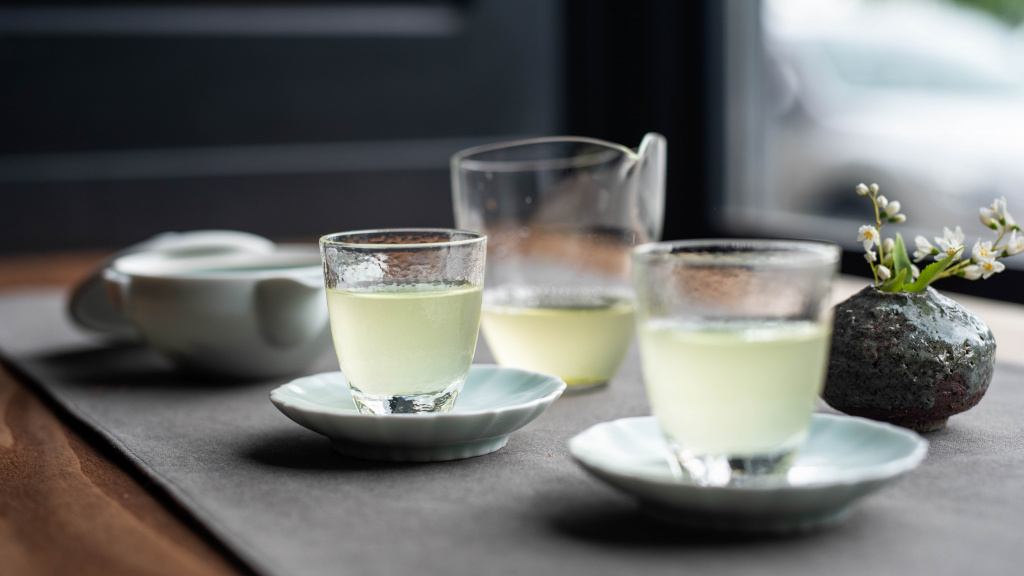
Preparing: 6 grams of tea leaves, 120-150 ml, 60 degrees celsius water, 5 minutes pouring. After the second pour 70-80 degrees celsius water for shorter times. You can try preparing this really interesting tea with other methods; for example, just like the smooth greens, start with 70-celsius degree water. Enjoy.
Photos: Kata Balogh, Yoshida tea garden

